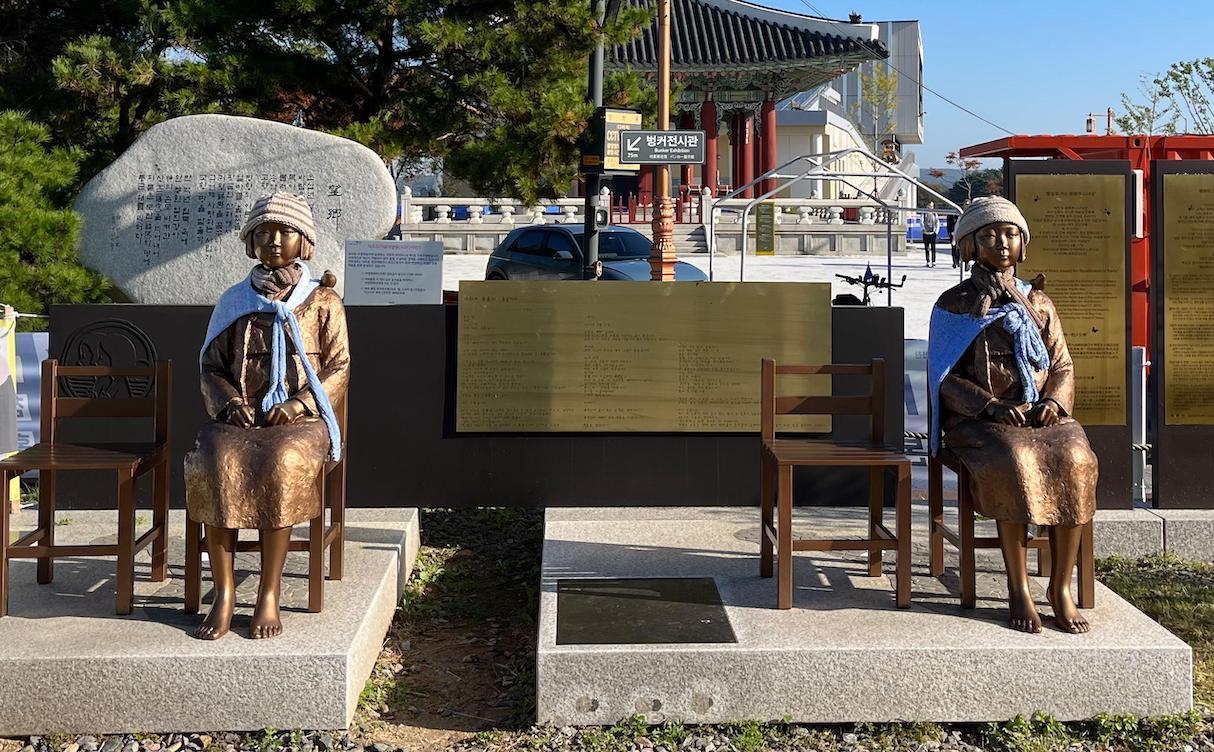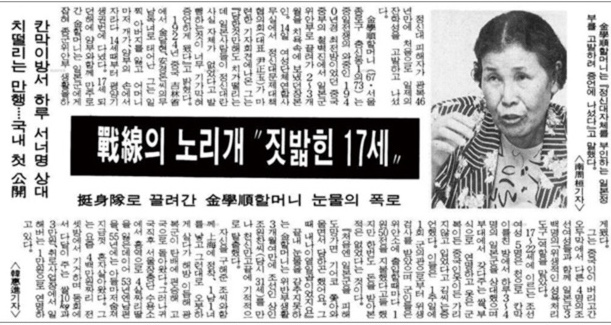My first encounter with the story of the Korean “comfort women” was not in a museum or a history book, but during a visit to the Demilitarized Zone (DMZ) in Korea. One of the stops on the tour was Imjingak Park, a place full of history and emotion. While looking at Mangbaedan, the altar where separated families pray and perform ancestral rites, something else caught my eye. A bronze statue of a young girl sitting beside an empty chair. Her bare feet, short hair, and serious expression seemed to hold an untold story. This was my first time seeing the Statue of Peace.

I later learned what it meant. The statue represents the thousands of women, most of them Korean, forced into sexual slavery by the Japanese military during World War II.
One of them was Kim Hak-sun. She was 67 years old when, on August 14, 1991, she became the first survivor to speak publicly about what happened to her. Her voice broke decades of silence and started a movement for truth and justice.
Kim was only 17 when she was taken to a Japanese military “comfort station” in China by a Japanese officer. In the comfort station, women aged between 17 and 22 had to face about 7–8 Japanese soldiers a day in small rooms separated only by cloth. They survived on rice from the military unit, wore whatever clothes were available, and had to go through weekly “sanitary inspections.” Kim managed to escape after three months, helped by a Korean merchant.
Her story, along with those of 18 other women, was published in the 1993 book The Korean Comfort Women Who Were Coercively Dragged Away for the Military, edited by the Korean Council for Women Drafted for Military Sexual Slavery by Japan. Her chapter was later translated into English in True Stories of the Korean Comfort Women.

The date August 14 was chosen as International Memorial Day for the Victims of Japanese Military Sexual Slavery because it was the day of Kim’s testimony. The Korean Council suggested it to honor survivors and remember victims from across Asia, including China, the Philippines, Taiwan and also Dutch women from Indonesia (which was a Dutch colony at the time). The date was first marked in Korea in the early 2010s and is now observed in several countries, with events often held at Statues of Peace.
The first statue was set up in 2011 in front of the Japanese embassy in Seoul, during the 1,000th “Wednesday Demonstration”, weekly protests demanding an official apology and compensation from Japan. The empty chair invites people to sit, reflect, and stand with the victims. Since then, statues have appeared in cities around the world: San Francisco, Glendale, Berlin, Sydney, Toronto, and more.
For the survivors, called halmoni (“grandmothers”), these statues are not just works of art. They are witnesses, standing in public spaces to tell the truth, make people ask questions, and remember lives that were forever changed.
Kim Hak-sun passed away in 1997 without ever hearing the official apology she wanted. The Japanese government offered her money as part of a compensation scheme, but she refused, saying she had not spoken out for money, only for justice.
But her voice lives on, echoed in bronze statues around the world. Every August 14, people gather by them to lay flowers, speak, and remember.
When I think back to that day at Imjingak Park, I remember not only the weight of Korea’s divided history, but also the still presence of that young girl in bronze. She sits there, season after season, reminding us that the past is not gone — and that justice, even when delayed, is still worth fighting for.
*
Learn more about the history and memorials for comfort women in this video by Arirang News (YouTube)
How about this article?
- Like12
- Support0
- Amazing0
- Sad0
- Curious0
- Insightful0


